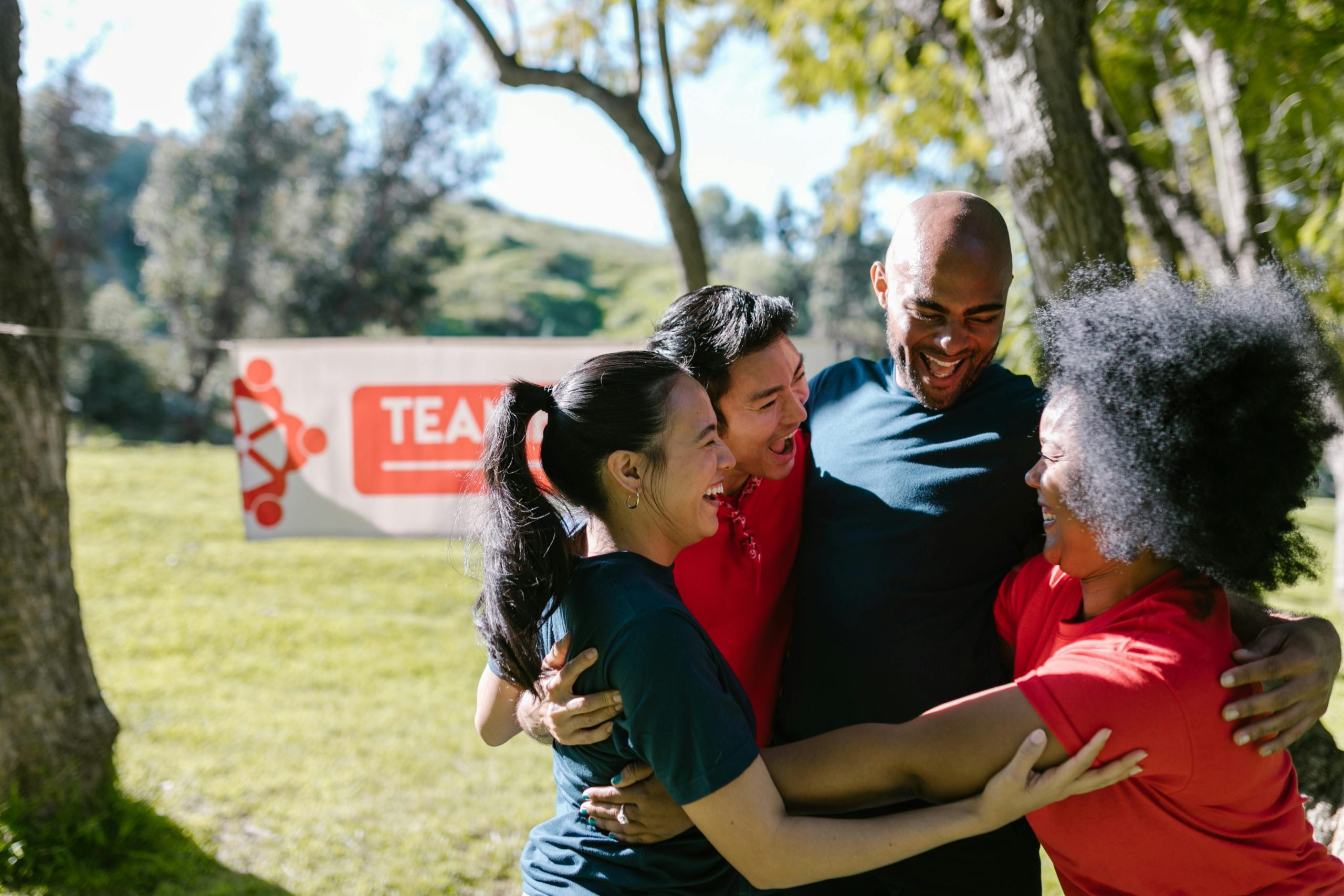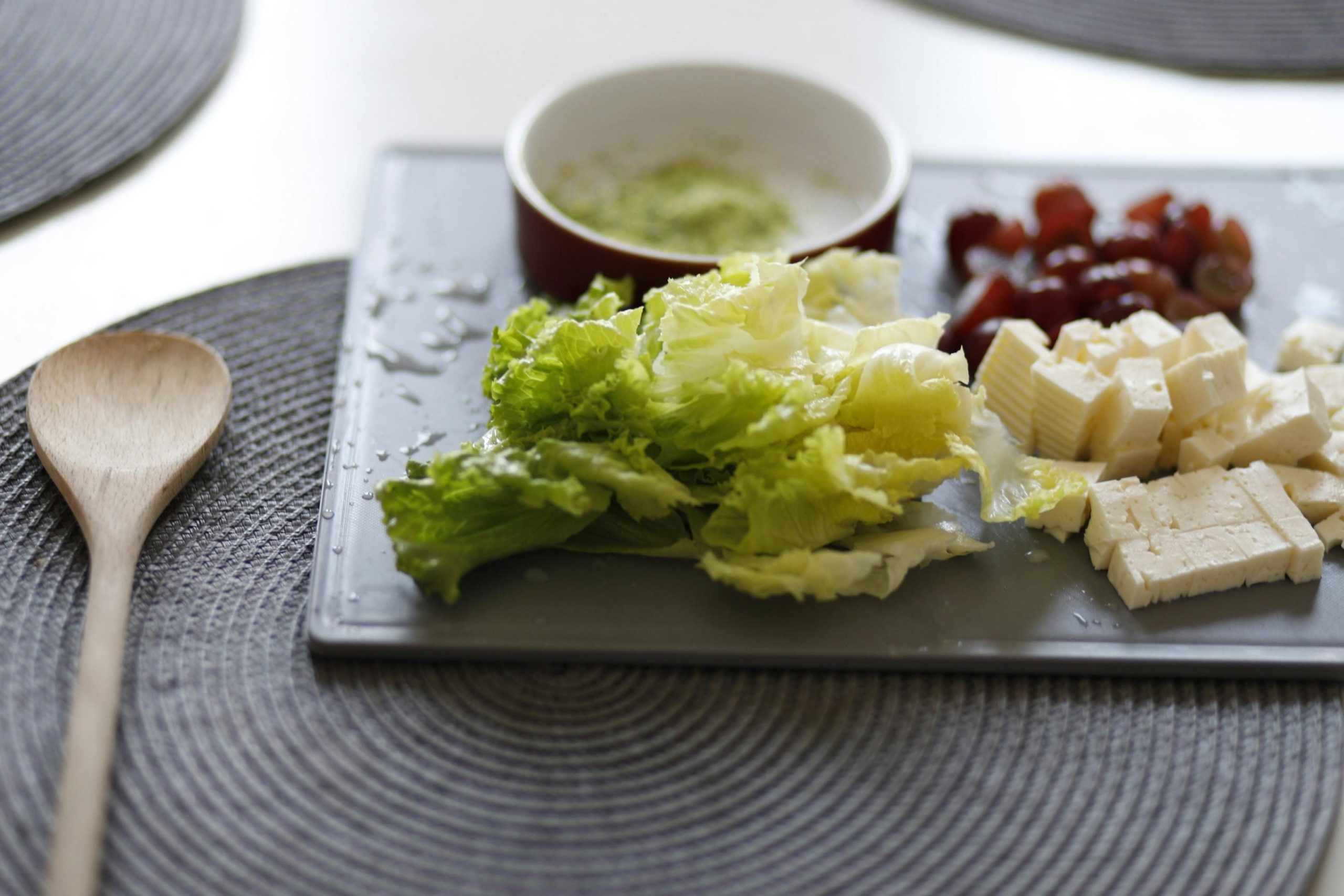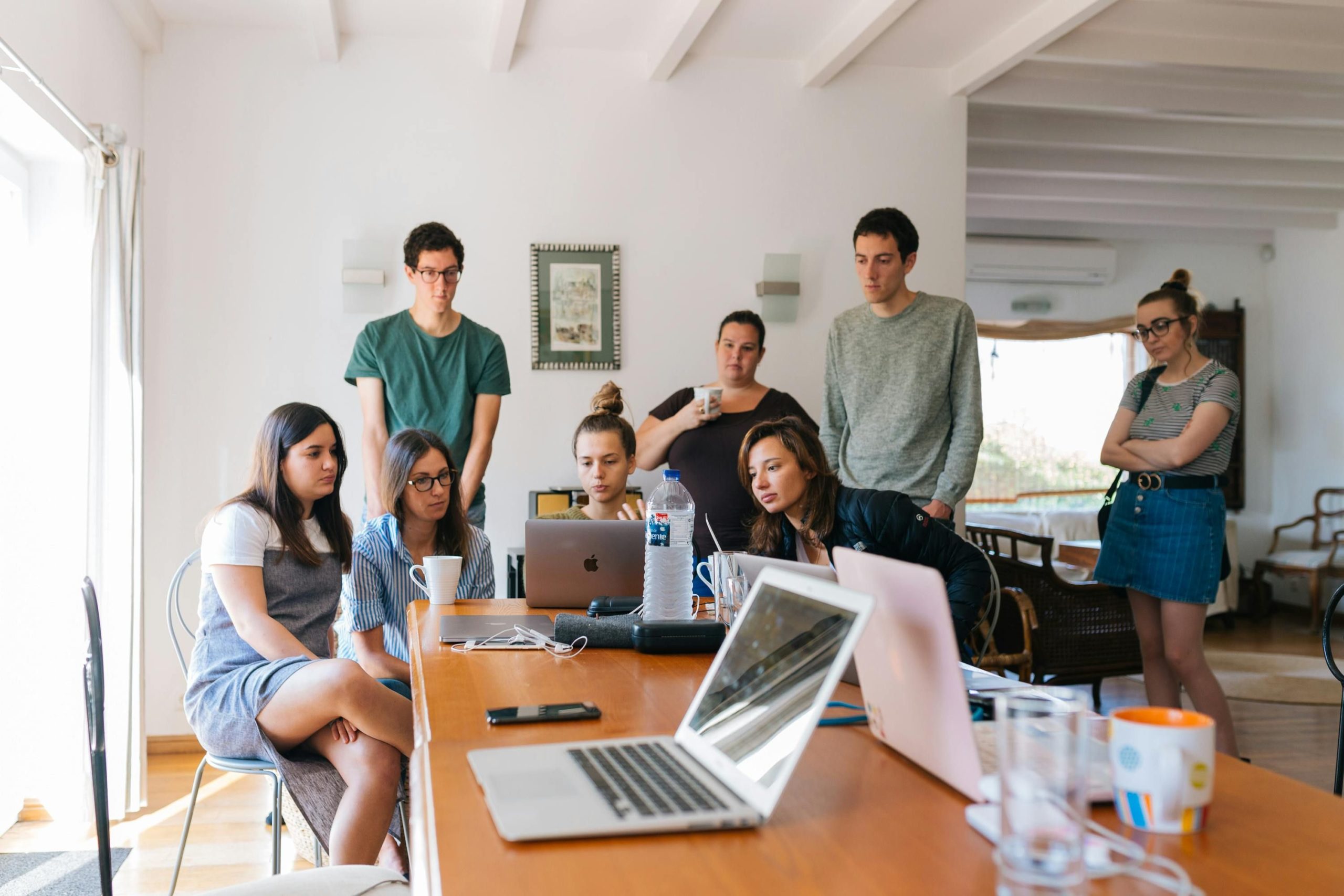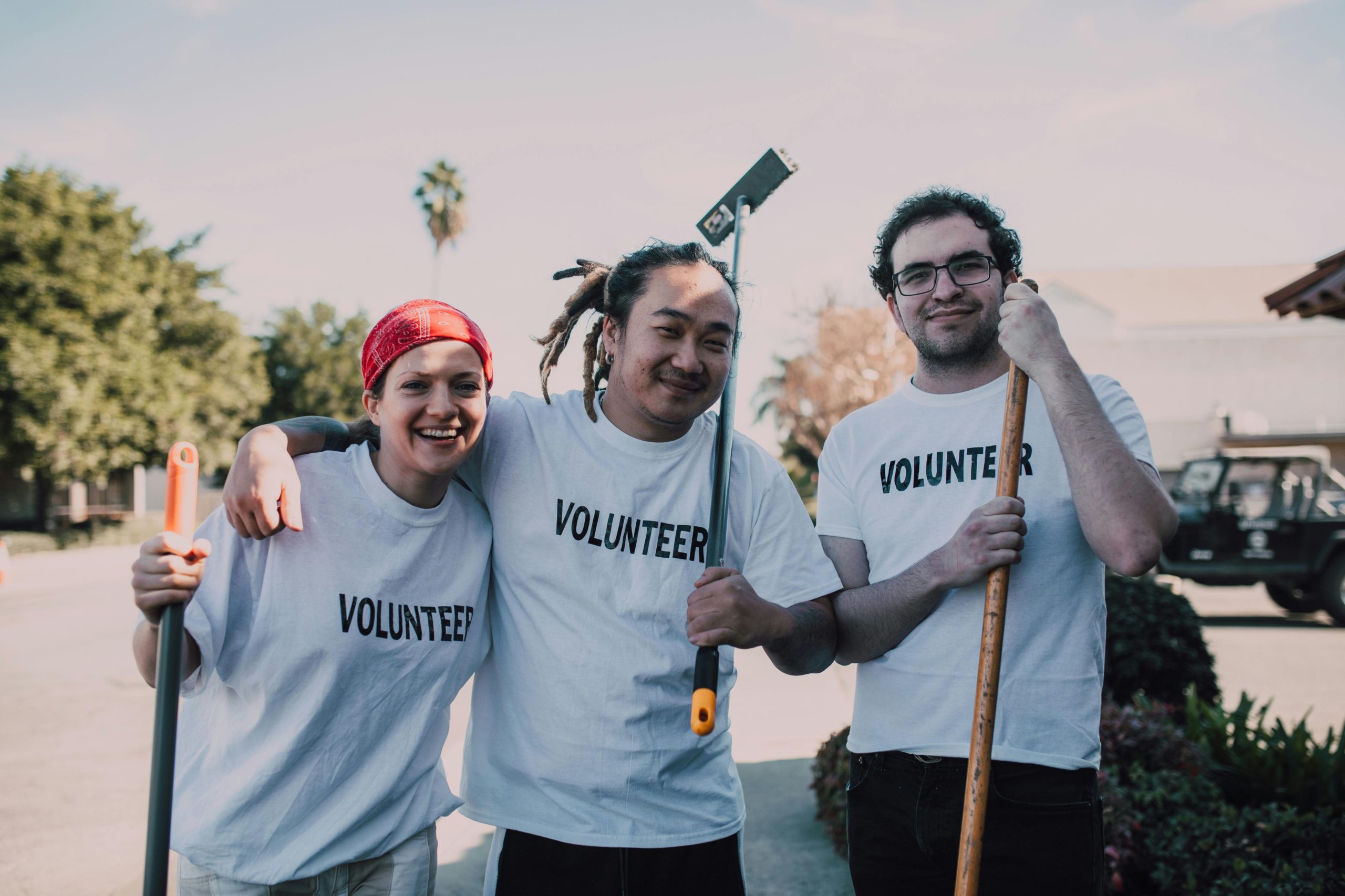Ever wondered how to transform a mundane workshop into an electrifying learning experience?
Keeping participants engaged and fostering teamwork can often feel like an uphill battle during workshops.
Introducing fun and interactive group activities, like creative group naming or engaging in a SWOT analysis, can significantly boost engagement and enhance teamwork.
This blog will explore a variety of group activities designed to make your workshops more dynamic and productive, from ice-breakers to conflict resolution techniques.
Ice-Breakers: Introductory Games for Workshops
Ice-breakers are a fantastic way to start any workshop, helping participants loosen up and get to know one another in a relaxed, fun environment. These activities are designed to break down barriers and create a welcoming atmosphere, making them ideal for the beginning of sessions where participants might be meeting for the first time. Whether it’s a corporate event or a casual team meeting, starting with an ice-breaker can significantly enhance participant engagement and set a positive tone for the entire session.
The key to a successful ice-breaker is to make it simple, engaging, and inclusive. Activities that encourage participants to share something about themselves can help create connections and foster a sense of community from the start. From quick games that require minimal setup to creative exercises that spark laughter and conversation, the right ice-breaker can transform the energy of a room, ensuring everyone starts the session feeling energized and connected.
Name Games to Kickstart Participant Interaction
Name games are a great way to help participants learn each other’s names and a bit about each other in a fun and memorable manner. One popular game is the ‘Name Game’, where participants sit in a circle and each person introduces themselves and then repeats the names of the people who introduced themselves before them. This not only helps with memorizing names but also adds a fun challenge as the list grows longer. Such games are perfect for creating a friendly atmosphere and making everyone feel more comfortable during the workshop.
Energisers: Quick Activities to Boost Energy in Workshops
To inject a quick burst of energy into your workshop, consider using energisers. These are short, lively activities designed to increase the energy level of participants, especially useful after breaks or during long sessions. Energisers like ‘Quick Stand-Up’ ask participants to quickly stand and share something interesting about their day or play a quick game of charades. Such activities are not only fun but also help shift the mood, sharpen focus, and get everyone ready for the next part of the session.
Creative Grouping Methods for Workshop Activities
Creative grouping methods are essential for enhancing interaction and teamwork during workshops. By dividing participants into smaller groups, facilitators can create a more intimate and focused setting that encourages active participation and closer collaboration. One effective method is the ‘Random Card Sort’, where participants select cards from a deck that have various colors, symbols, or numbers. This random selection process ensures a mix of skills and personalities within each group, promoting diversity in thought and approach. This method not only breaks the ice but also sets the stage for a dynamic exchange of ideas, as team members bring different perspectives and strengths to the table.
Another innovative grouping method is the ‘Role Play Shuffle’. In this activity, participants are assigned different roles or scenarios related to the workshop’s theme, and they must find others with complementary roles to form a group. For instance, in a customer service workshop, roles might include a customer, service agent, and manager. This method not only helps in forming groups but also engages participants in role-specific thinking and problem-solving from the outset. Such role-based grouping encourages empathy and understanding of different perspectives within the workplace, making it a powerful tool for enhancing teamwork and communication skills.
Fun Group Naming Activities for Team Identity

Fun group naming activities can significantly enhance team identity and cohesion. For instance, the ‘Logo Creation Challenge’ encourages teams to design a unique logo that represents their group’s spirit and goals. This activity not only fosters creativity but also allows team members to express their collective identity visually. Each group presents their logo and explains the concept behind their design, which can include symbols that represent their strengths or the workshop’s theme. This activity not only makes the naming process enjoyable but also strengthens the bonds between team members as they collaborate on a creative project.
Setting Objectives as a Group Activity
Setting objectives as a group activity can be both engaging and effective in aligning the team’s goals. The ‘Vision Board Creation’ is a dynamic way to involve everyone in goal-setting. Each team member contributes images, words, or symbols to a collective vision board that represents their shared objectives and aspirations. This visual and interactive approach helps clarify the team’s goals and ensures that everyone’s voice is heard. Discussing and deciding on the content of the vision board also enhances commitment to the objectives, as team members see their personal inputs reflected in the group’s goals. This method not only aligns the team but also boosts motivation and accountability towards achieving the set objectives.
Conducting a SWOT Analysis in Team Settings
Conducting a SWOT analysis in team settings is a powerful way to engage participants in a comprehensive evaluation of a project’s strengths, weaknesses, opportunities, and threats. This activity not only aids in strategic planning but also promotes a deeper understanding of the project’s environment and internal capabilities. To begin, divide participants into groups and assign each group one of the SWOT categories. Provide them with data and insights relevant to their category, such as market trends for opportunities or resource limitations for weaknesses. Encourage each group to brainstorm and list down elements under their assigned category, ensuring a diverse range of perspectives are considered.
After the groups have identified the key elements of their categories, the next step is to share these findings with the entire team. This can be done through a collaborative session where each group presents their analysis. Use visual aids like charts or matrices to organize and display the information clearly. This visual representation helps in comparing and contrasting the various elements effectively. Key points from each category should be discussed to understand their implications on the project. Finally, prioritize the SWOT elements based on their impact and feasibility, and use this prioritized list to draft potential strategies that leverage strengths and opportunities while mitigating weaknesses and threats.
Pros and Cons: Evaluating Ideas in Groups
Evaluating ideas in groups often involves weighing the pros and cons, a critical step in decision-making processes. During workshops, facilitating a pros and cons activity can help participants critically assess various strategies or decisions. Start by dividing participants into small groups and assign each group a different idea or strategy to evaluate. Each group should list the advantages (pros) and disadvantages (cons) of their assigned idea. Encourage open and anonymous contributions using tools like digital polls or traditional brainstorming sessions to ensure that all participants feel comfortable sharing their thoughts. This activity not only aids in identifying the most viable ideas but also fosters a culture of collaborative evaluation.
Decision Making Exercises for Effective Teamwork
Decision-making exercises are essential for effective teamwork, helping groups to make informed and timely decisions. One effective exercise is Dot Voting, where each participant is given a limited number of dots (votes) they can use to mark the ideas they support the most. This method is particularly useful in narrowing down a large list of options to the most preferred ones without lengthy discussions. Begin by presenting all the proposed ideas on a board or digital platform. Participants then place their dots on the ideas they find most compelling. The ideas with the most dots at the end of the voting session are considered the group’s top choices, which can then be explored further or implemented.
Ensuring Comprehension in Workshop Activities
Ensuring that every participant fully understands the material presented in a workshop is crucial for the success of the event. Effective comprehension strategies involve a blend of explicit instruction and practical application. Facilitators should aim to explain concepts clearly and directly, using concise language that all participants can understand. Additionally, incorporating real-life examples and non-examples helps participants grasp not only when but also how to apply the new skills or knowledge. This approach ensures that participants are not just passive listeners but are actively engaged in learning and applying the content.
To further enhance understanding, workshop activities should be designed to cater to various learning styles. For instance, visual learners benefit from diagrams and flowcharts, while kinesthetic learners might appreciate more hands-on activities. Here are some techniques that can be particularly effective:
- Demonstrations followed by participant re-enactment, allowing learners to see and then practice the new skills.
- Group discussions to facilitate peer learning and enable participants to voice questions or concerns.
- Using sticky notes for brainstorming or feedback sessions, which can visually capture key points and ideas shared during the workshop. These methods not only reinforce the material but also make the learning experience more interactive and enjoyable for all participants.
Assessment Techniques for Participant Understanding
To accurately assess participant understanding during workshops, facilitators can employ a variety of techniques that provide immediate insights into how well the material is being grasped. Quizzes and short tests can be administered to measure retention of key concepts. For a more dynamic assessment, facilitators can use interactive activities like having participants teach back a concept to a peer, which not only tests their understanding but also enhances it through the act of teaching. Additionally, real-time polls or digital quizzes can offer instant feedback and help in identifying areas where participants might need further clarification or deeper exploration of the topic.
Effective Feedback Methods in Workshops
Gathering and providing effective feedback in workshops is essential for both the facilitator and the participants. Methods such as the ‘Start, Stop, Continue’ exercise allow participants to reflect on the current practices and identify changes that could enhance their learning experience. Another impactful method is the AIR Feedback model (Action, Impact, Request), which encourages constructive feedback by focusing on specific actions, their impacts, and suggested improvements. This model ensures that feedback is actionable and growth-oriented. Additionally, using anonymous digital platforms for feedback collection can encourage more honest and candid responses, helping facilitators adjust their approach and content to better meet the needs of all workshop participants.
Quiz Time: Engaging Participants with Challenges
Quizzes not only make learning fun but also serve as a powerful tool to engage participants and assess their understanding in a dynamic way. By integrating quizzes into workshops, facilitators can create a competitive yet collaborative atmosphere that encourages participants to actively engage with the content. These quizzes can range from simple fact-checking questions to complex problem-solving exercises, catering to a variety of learning styles and objectives. They can be used to kickstart discussions on new topics, reinforce previously covered material, or serve as a lively break from more intensive workshop activities. The key is to design quiz questions that are thought-provoking and relevant, ensuring that they add value to the educational goals of the workshop while keeping the energy high.
Solving Riddles: A Creative Problem-Solving Activity
Riddles are an excellent method for sharpening problem-solving skills and sparking creative thinking among workshop participants. These brain teasers require individuals to think outside the box and approach problems from new angles, making them perfect for team-building and improving cognitive functions. When participants work together to solve riddles, they not only enhance their individual problem-solving skills but also improve their ability to collaborate effectively. Here are a few ways riddles can be incorporated into workshops:
- Start a session with a riddle to energize the group and get their minds active.
- Use riddles as a transition between different workshop segments to keep engagement high.
- Organize a riddle-solving competition where teams compete to solve a series of riddles, fostering a sense of teamwork and collective achievement.
This approach not only makes the learning process more enjoyable but also reinforces the importance of persistence and creative thinking in problem-solving.
Exploring Hypothetical Scenarios for Creative Thinking
Hypothetical scenarios are a powerful tool in workshops, serving as a catalyst for critical thinking and expansive discussion. By presenting participants with a scenario that requires them to imagine outcomes or solve complex problems, you can effectively engage their analytical skills and creativity. For example, you might ask participants to envision a future where a specific technology has radically altered daily life or to solve a crisis in an imaginary company. These scenarios encourage participants to step outside their normal boundaries of thinking and explore a range of possibilities. This method not only enhances their problem-solving skills but also promotes a deeper understanding of the topics at hand through active learning.
When using hypothetical scenarios, it’s crucial to facilitate a dynamic environment where all participants feel comfortable expressing their ideas. Here are some tips to maximize the effectiveness of these exercises:
- Encourage open-ended responses that allow for a variety of solutions and perspectives.
- Facilitate group discussions to explore different angles and deepen the analysis.
- Use visual aids or props to make the scenarios more tangible and engaging.
This approach not only makes the learning process more interactive but also helps in building a collaborative spirit within the group. Participants learn to appreciate diverse viewpoints and work together to synthesize these into coherent strategies or solutions, thereby enhancing their teamwork skills in a creative and stimulating context.
Collaborative Writing: Teamwork Through Creative Expression
Collaborative writing exercises are a fantastic way to harness the collective creativity and knowledge of workshop participants. By engaging in activities where they must co-create stories or documents, participants develop a deeper sense of teamwork and communication. For instance, you might have groups write a short story based on a prompt related to the workshop’s theme or collaboratively draft a proposal to tackle a hypothetical business challenge. These activities require participants to negotiate, share ideas, and build upon each other’s contributions, which not only fosters a creative environment but also strengthens interpersonal relationships. The final pieces can be shared among the group, providing a sense of accomplishment and a tangible outcome of their collaborative efforts.
Conflict Resolution Techniques in Team Settings
Conflict resolution is a crucial skill in any team setting, and workshops provide a perfect opportunity to teach and practice these techniques. Activities specifically designed for conflict resolution not only help in mitigating disputes but also enhance the overall communication and understanding among team members. For instance, Rotate Debates is an activity where participants are split into two groups to argue opposing views of the same topic. After a set time, they switch sides, advocating for the viewpoint they initially opposed. This exercise fosters empathy and helps participants understand different perspectives, which is key in resolving conflicts. Another effective activity is Reflective Discussions, where team members analyze real or hypothetical conflict scenarios to discuss and identify effective resolution strategies. These discussions encourage critical thinking and allow participants to apply theoretical solutions in a controlled, reflective environment.
Engaging in Conflict Confessions can also be a transformative part of conflict resolution training in workshops. In this activity, participants share personal experiences with conflict, focusing on the causes, escalation, resolution, and lessons learned. This not only humanizes the learning experience but also allows for a deeper connection among team members as they share vulnerabilities and successes. To structure this effectively, facilitators can guide the storytelling to ensure that each story adheres to constructive and educational outlines, such as:
- What initiated the conflict?
- What actions escalated the situation?
- How was the conflict resolved?
- What were the successful strategies?
- What lessons were learned for future interactions?
These real-life examples complement the more structured debate and discussion formats, providing a well-rounded approach to learning conflict resolution. By integrating these activities, workshops can equip participants with the necessary tools to handle and resolve conflicts effectively, promoting a healthier, more collaborative team environment.
Idea Bank: Sharing and Expanding Ideas in Workshops
Idea sharing is a pivotal component of any successful workshop, playing a crucial role in harnessing the collective intelligence of the group. By creating a structured environment where participants feel safe and encouraged to share their thoughts, workshops can become a fertile ground for innovative ideas and collaborative problem-solving. Effective idea collection and discussion can be facilitated through several methods: using idea banks where participants deposit their thoughts on sticky notes or a digital platform, hosting brainstorming sessions guided by specific prompts, and organizing roundtable discussions to deepen the exploration of these ideas. Each method ensures that every participant has the opportunity to contribute, making the workshop not only more inclusive but also more productive.
Live Q&A: Interactive Engagement in Workshops
Conducting a live Q&A session during workshops can significantly boost participant engagement and ensure that their immediate questions or concerns are addressed. To run an effective Q&A, it’s important to create an open and respectful environment where participants feel comfortable asking questions. Here are some tips to enhance the effectiveness of a live Q&A session:
- Prepare in advance: Have some questions ready to stimulate discussion if there’s a lull.
- Use technology: Employ tools like live polling or Q&A software to manage questions efficiently and democratically.
- Encourage participation: Make it clear that all questions are welcome, and try to involve as many attendees as possible.
- Stay on topic: Guide the conversation to keep it relevant to the workshop’s objectives.
- Handle difficult questions gracefully: Prepare to tackle tough or unexpected questions without disrupting the flow of the session. This interactive approach not only keeps the participants engaged but also helps in addressing specific concerns they might have, making the workshop more effective and tailored to their needs.
Enhance Your Workshop with Indulge‘s Culinary Team Building
Enhancing your workshop with INDULGE‘s culinary team building activities can transform a standard team gathering into an unforgettable bonding experience. Imagine the unique opportunity to explore Zurich’s rich culinary landscape as a group, guided by expert local chefs, sommeliers, or bartenders. These activities are designed not just to tantalize your taste buds but to also forge stronger connections among team members as they engage in:
- Learning about Zurich’s diverse food heritage
- Collaboratively discovering hidden gastronomic delights
- Experiencing the joy of shared meals and stories
Incorporating such a distinctive element into your workshops can significantly boost morale and foster a collaborative spirit, essential for a productive team environment. INDULGE offers a range of experiences that can be tailored to your team’s needs, from private Wine & Dine events in Zurich’s industrial heart to guided food tours through the historic Old Town. To make your next team-building event both enriching and memorable, consider exploring the culinary adventures that INDULGE has to offer. Visit INDULGE to book a unique culinary team-building event that your team will talk about for years to come.
Frequently Asked Questions
How can I make my workshop more fun?
To make your workshop more fun, consider incorporating engaging and interactive activities such as ice-breakers, energizers, and creative group naming activities. Ice-breakers like introductory games can help participants relax and get to know each other in a fun environment. Energizers can inject a quick burst of energy and excitement into the room, especially useful after breaks or during longer sessions. Additionally, fun group naming activities can foster creativity and enhance team identity, making the workshop experience enjoyable and memorable for all participants.
What are project workshop activities?
Project workshop activities can include a variety of interactive and collaborative tasks designed to enhance teamwork and achieve specific project goals. Examples of such activities include conducting a SWOT analysis to evaluate project strengths, weaknesses, opportunities, and threats, setting objectives collectively through activities like Vision Board Creation, and engaging in decision-making exercises such as Dot Voting to prioritize ideas. These activities help participants actively contribute to the project planning and execution process, making the workshop dynamic and productive.
How to create a workshop activity?
To create a workshop activity, start by defining the goals and objectives of the activity in alignment with the overall workshop theme. Consider the participants’ backgrounds and the skills you wish to develop. Design the activity to be engaging and suitable for the group size, using methods such as role-playing, problem-solving tasks, or creative group exercises. Ensure the activity is interactive to keep participants engaged, and incorporate tools or materials that facilitate learning and collaboration. Finally, plan how you will facilitate the activity, considering how to introduce it, guide participants, and wrap up with a debrief to reinforce the learning outcomes.
What is the best topic for a workshop?
The best topic for a workshop depends on the interests and needs of the participants, as well as the goals of the organization hosting the workshop. Popular topics often include leadership development, team-building, conflict resolution, and specific skill training such as communication or project management. To select an appropriate topic, assess the current challenges or skill gaps within the team or organization and choose a topic that addresses these needs while also offering opportunities for growth and development.








